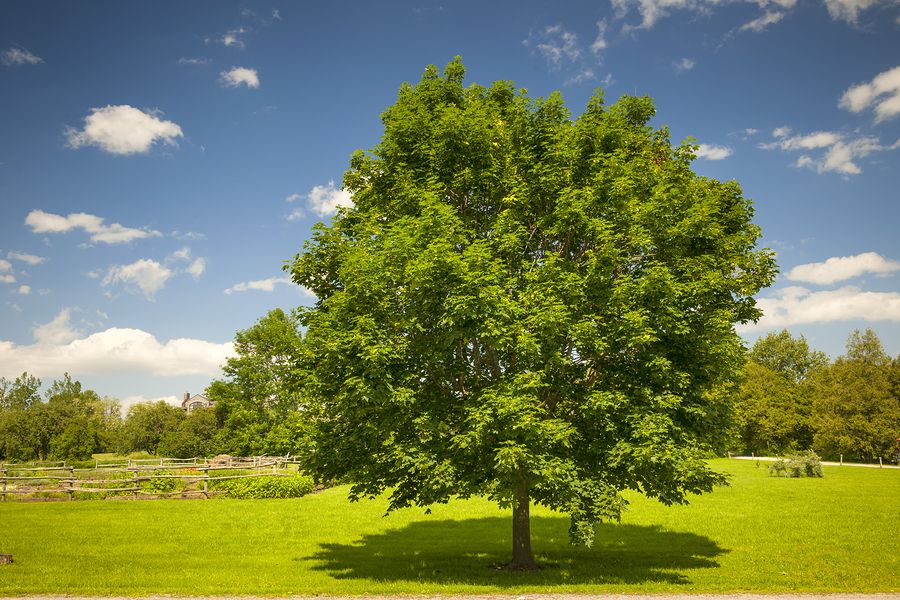
Arbor-wellness: Trees and Water
When I ask what the most limiting factor is for tree health, I often get answers like insects or diseases, the right climate, or even compacted and poor soils. And while those are all important factors in tree health, the most important is actually water. If a tree does not have water it will die.
Proper watering is an essential part of caring for trees. But how much to water and when are critical to understand.
Here are some guidelines:
Water deeply – Water the soil, where the roots are. We recommend deep watering in the root zone, which is out from the trunk to the edge of the canopy, and getting the soil moist at least 12 inches down each time you water. For established trees, this should be done every 8 weeks during the dry season. For trees that require more water – like maples and redwoods – the frequency should be every three to four weeks. Young trees require watering more often too, but since their canopy is smaller, the area to water will be smaller.
Most importantly, avoid frequent, light watering – Trees require a very different watering schedule than turf or even most shrubs, so having a way to water trees separately can be very valuable.
When trees are not watered deeply, it often leads to moisture or drought stress by mid-summer. Drought stress can increase a tree’s susceptibility to certain diseases and insects. Dry soils can cause the death of small roots and reduce a tree’s capacity to absorb water, even after the soil is re-moistened.
There is no way to look at the soil from above and tell how much moisture is in it. To determine how dry the soil is, you must probe the soil, either with a trowel by hand, or with a moisture meter. Hand moisture meters do help, but at Arborwell we have new state of the art wireless meters that are installed in the ground and read the moisture on a continual basis. When trees are very valuable and there is concern for their survival, then long term monitoring is the best way to track and analyze how often to water and how much to put on. These same sensors can be used for shorter duration monitoring if you are auditing the irrigation system to determine the best schedule and timing for an automatic drip or bubbler system
Don’t forget the trees on your parkway – During droughts street trees need water too.
Keep checking in the fall – Trees and shrubs, especially evergreens and newly planted trees, need ample water in their root systems as they go into winter. So continue to water as long as you can.
Water trees in containers more frequently – Because there is little soil to hold water around their roots, container plants can dry out and wilt fairly easily. If container plants are in full sun, they will likely require more frequent watering than those in shade.
Check on sensitive trees and shrubs – Drought-sensitive trees and plants that are likely to show the effects of reduced moisture include magnolias, Japanese maples, dogwoods, beeches, larches, tulip trees, redwoods and birches.
Spread mulch – A layer of organic mulch, such as shredded bark or wood mulchto insulates soil against extremes of temperature fluctuations and holds in soil moisture. Apply no more than three inches deep of mulch in a circle around trees. Do not let mulch touch the trunk.
What systems to use – On larger properties and irrigation system is a must. We recommend a drip or bubbler system. These should be checked on a regular basis for clogs and leaks. Older irrigation systems often used spray heads around trees and many sites still have them. Above ground water is far more inefficient. The proper area around the tree is usually not covered adequately by the spray and the trunk of the tree is often sprayed excessively. Most spray heads also put out too much water at one time, so the ground cannot absorb enough before it starts to run off. When it is possible, these spray systems should be converted to drip or bubbler systems. The water savings alone will offset the cost down the road.
Reclaimed water – This is an important consideration as more and more sites are being watered with reclaimed water. The drawback to this water is the high salt content of most reclaimed water. At Arborwell, we can recommend ways to reduce the salt build-up from reclaimed water. This is important because too much salt will cause problems with many trees. If your site has reclaimed water, the advanced moisture sensors we use also measure salinity. This helps us watch and act to reduce the salt build up before it affects the trees.
If you have any questions or concerns about your trees health, fill out the form below to get in contact with one of Arborwell’s certified arborists!